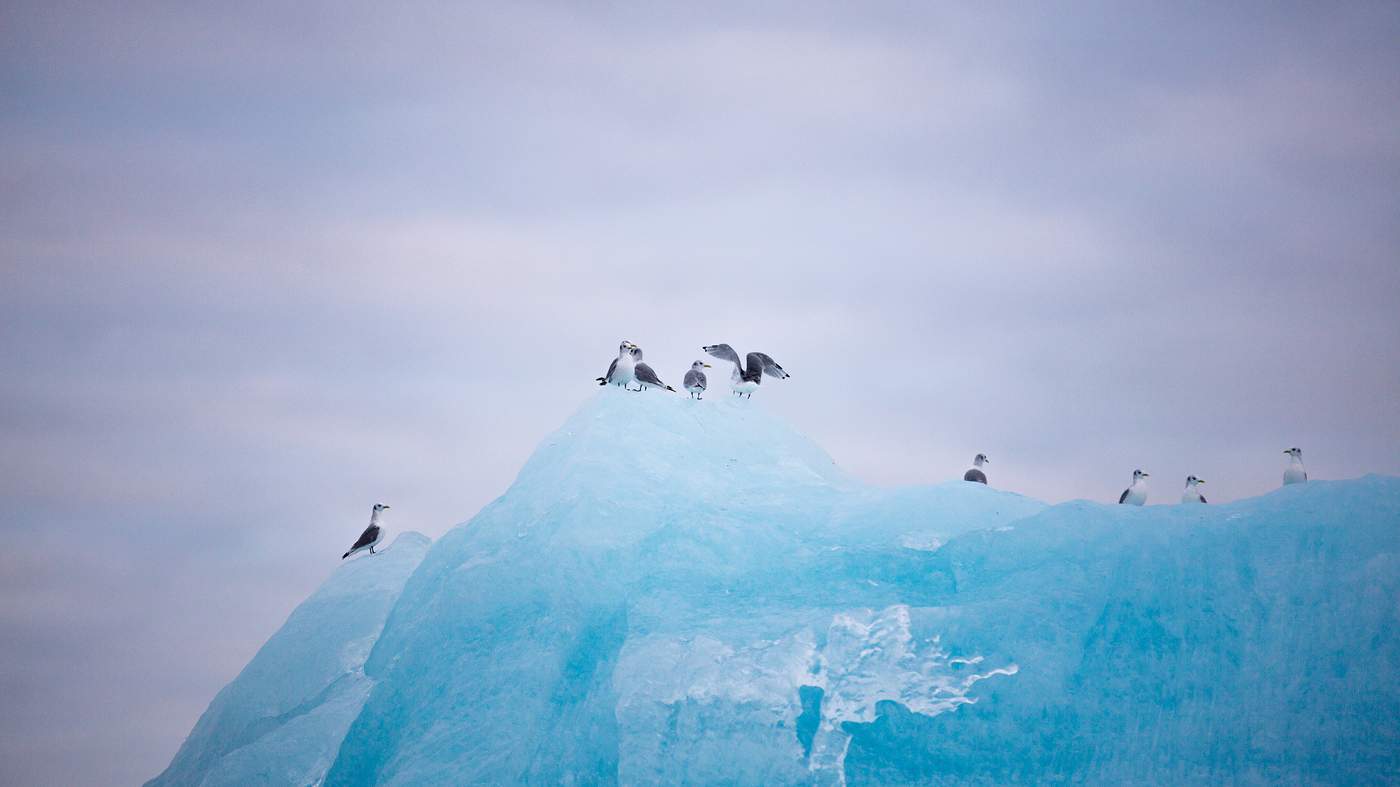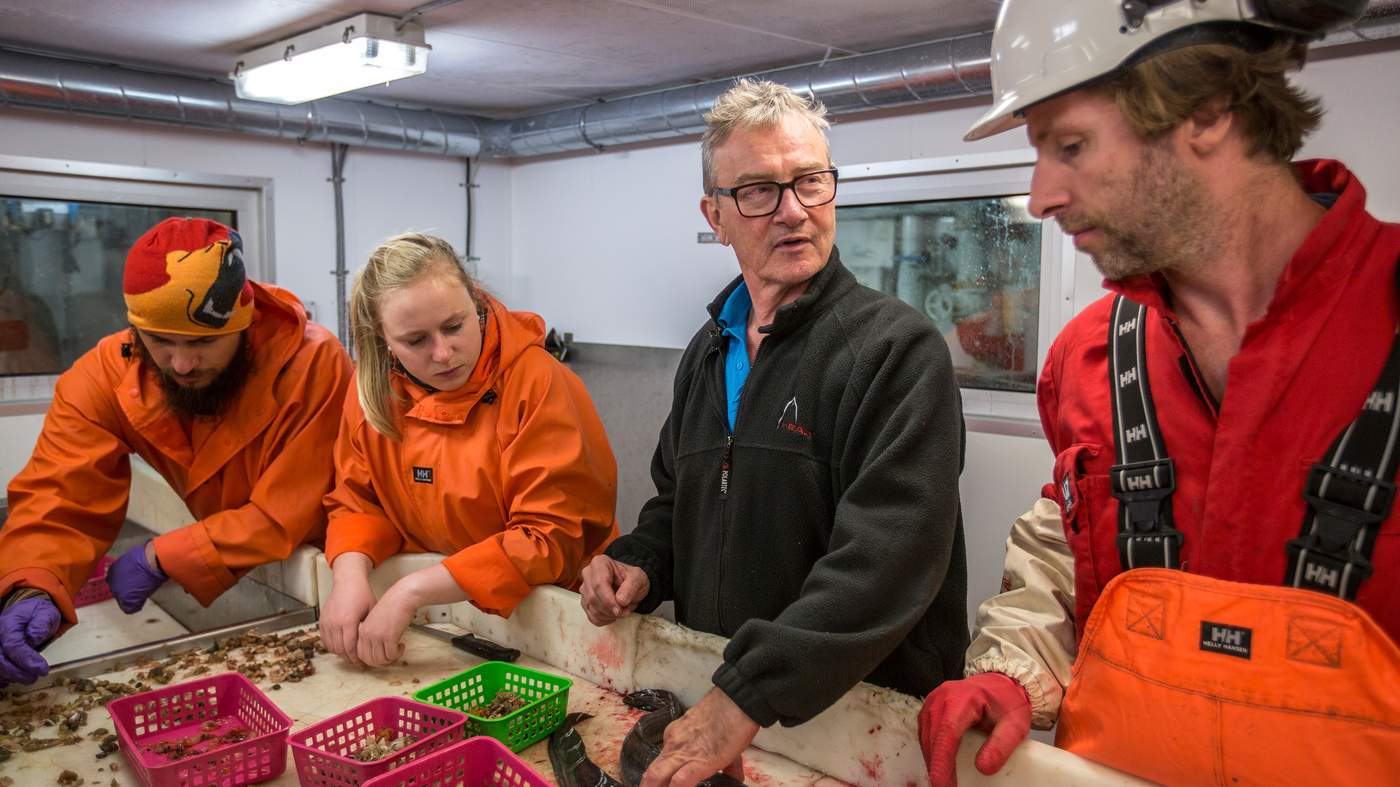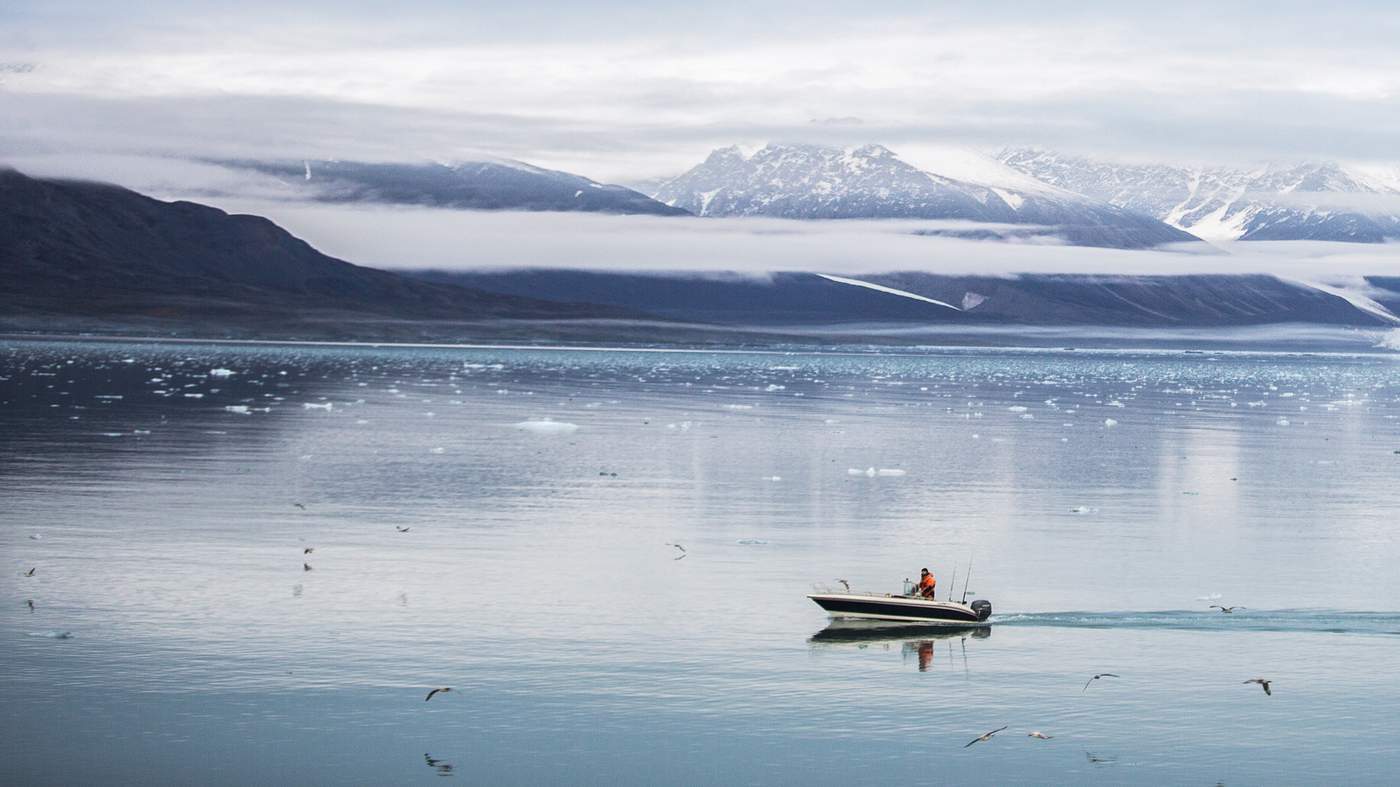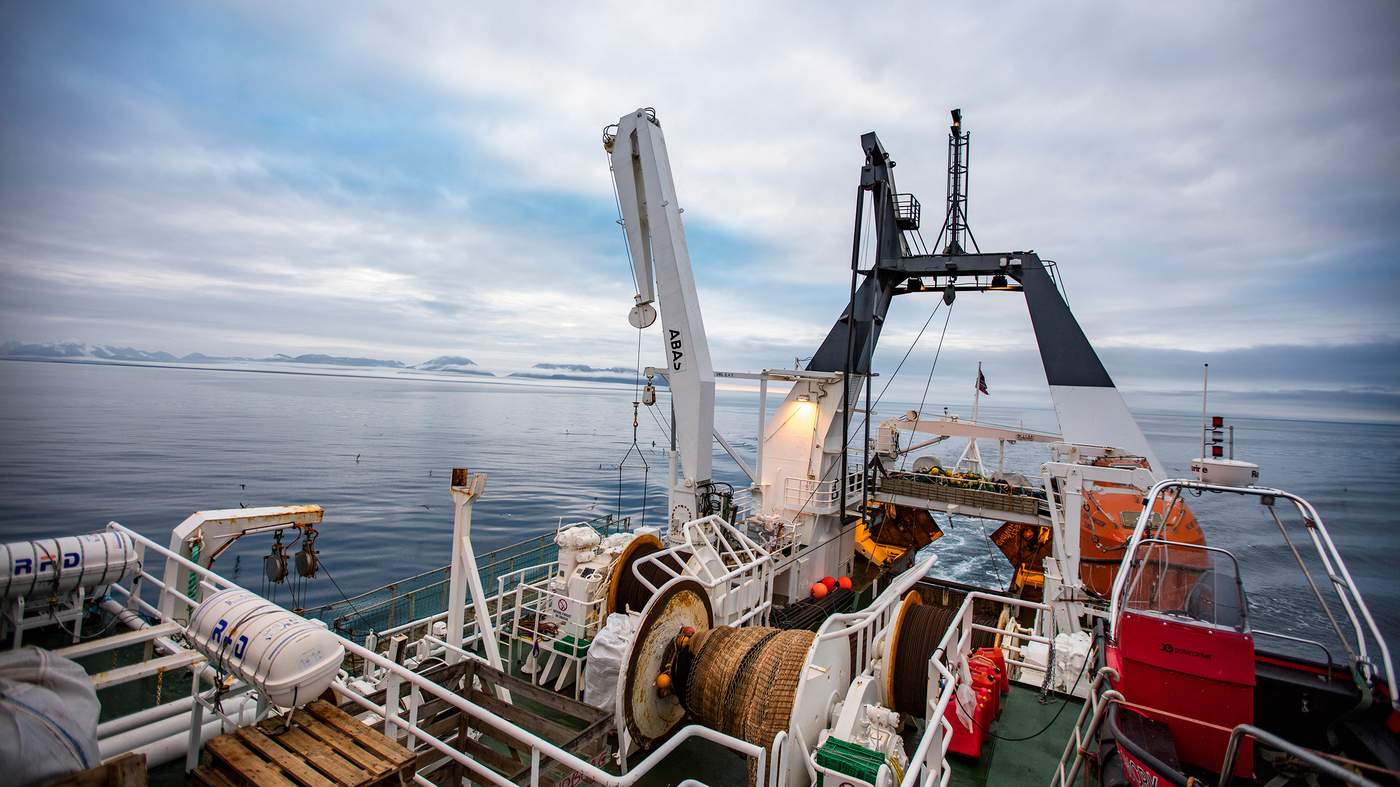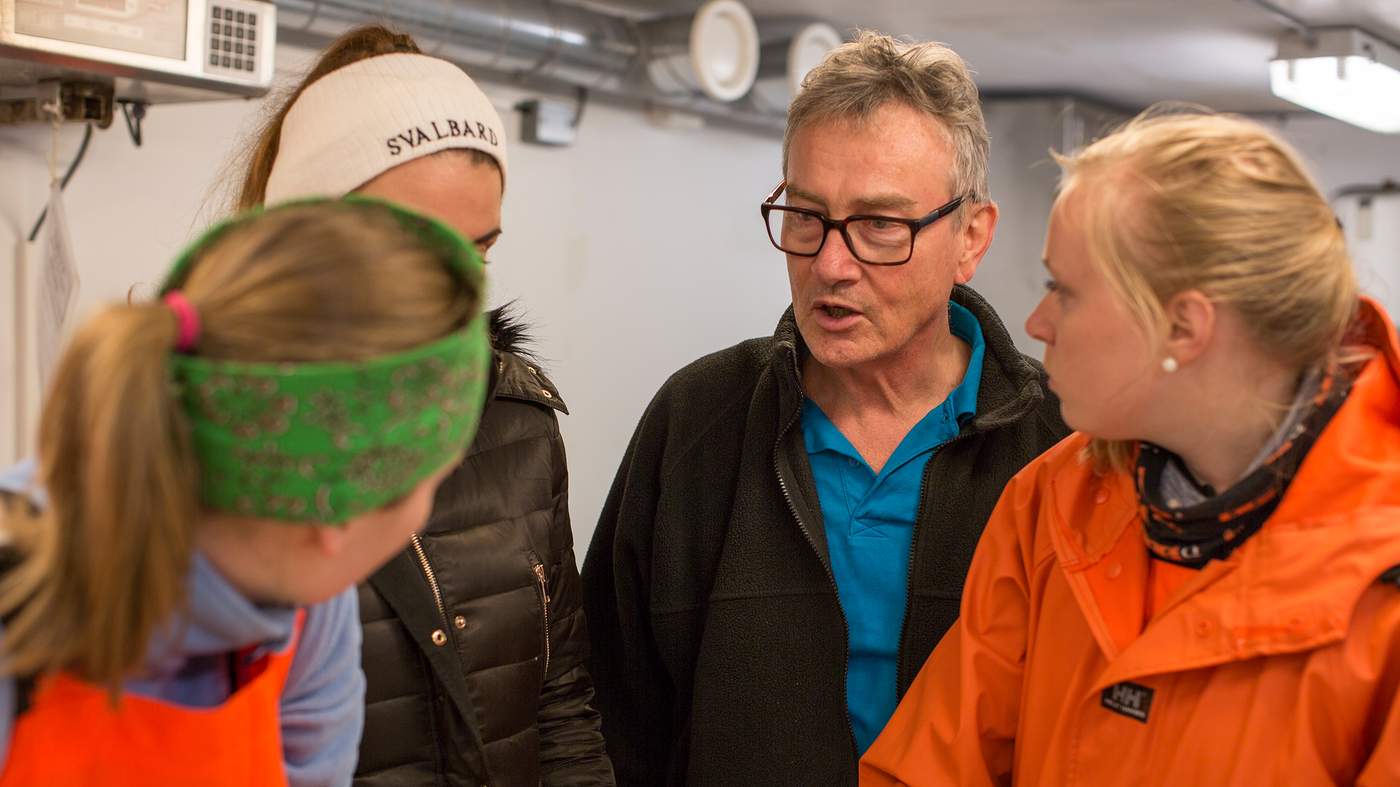Back on the water, the team are busy conducting a series of scientific trawls to see what lies beneath. There are no mysterious dark blobs today and the catch is tiny – this is a research boat not a commercial trawler. The students joke about a small lunch tomorrow as a few cod are hauled aboard, along with smaller fish and debris.
A changing climate
The team then lowers over the side an odd instrument that looks more suited to a Mars mission than a trip to the bottom of the sea. As it sinks, it takes several measurements, including water salinity and temperature.
With these data, the researchers can see where the water came from. In this area, that usually means the Atlantic. The Gulf Stream used to flow to the west of Svalbard, but the changing climate has pushed it eastwards, bathing Svalbardian fjords with warm Atlantic waters.
And these warmer waters are bringing something new and almost invisible to these waters.
In Arctic waters, as elsewhere in the ocean, plankton underpins everything. Any change has clear consequences on the species that eat it, further up the food chain.
Not all changes are positive. The zooplankton (tiny animals that drift near the surface) moving northwards with the warm water contain three times less fat than their northern cousins. And while low fat foods may be good for overeating humans, they’re a real problem for seabirds like the fulmar gulls wheeling around our vessel. Low fat plankton means smaller birds, and chicks maturing later.
So the water’s plankton content is hugely important for Sunnanå. For him, it provides a measure of the changes happening as well as a measure of how strong the cod stocks will be.
“We are concerned by the fact things are changing and can change very quickly. Although we have a long-term trend that is quite clear, big changes can take place in just a few years. And on some occasions, there can be a substantial lack of food in the system, probably due to some mismatch in the abundance of prey and/or predators.”
All images © MSC / J Morgan

